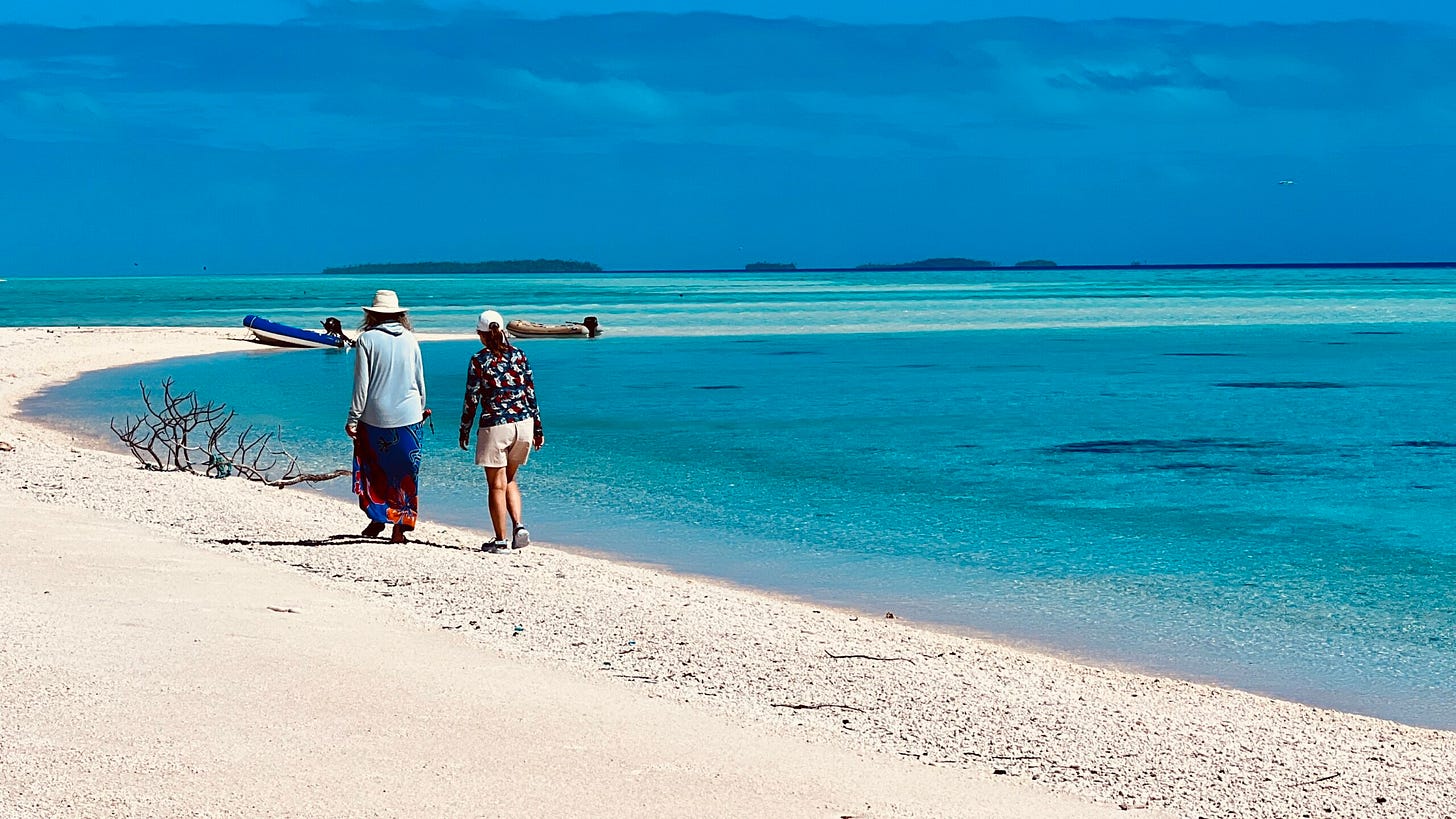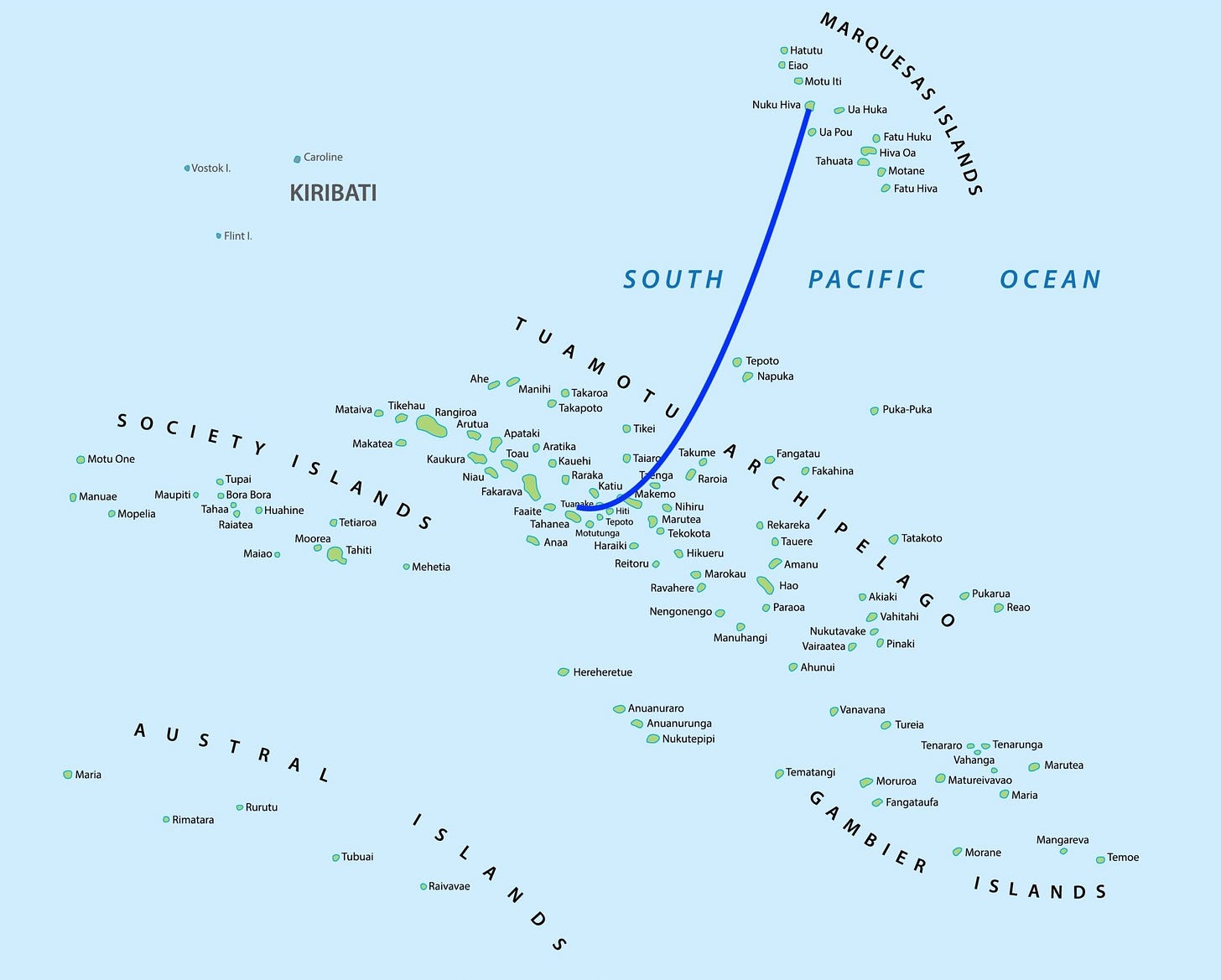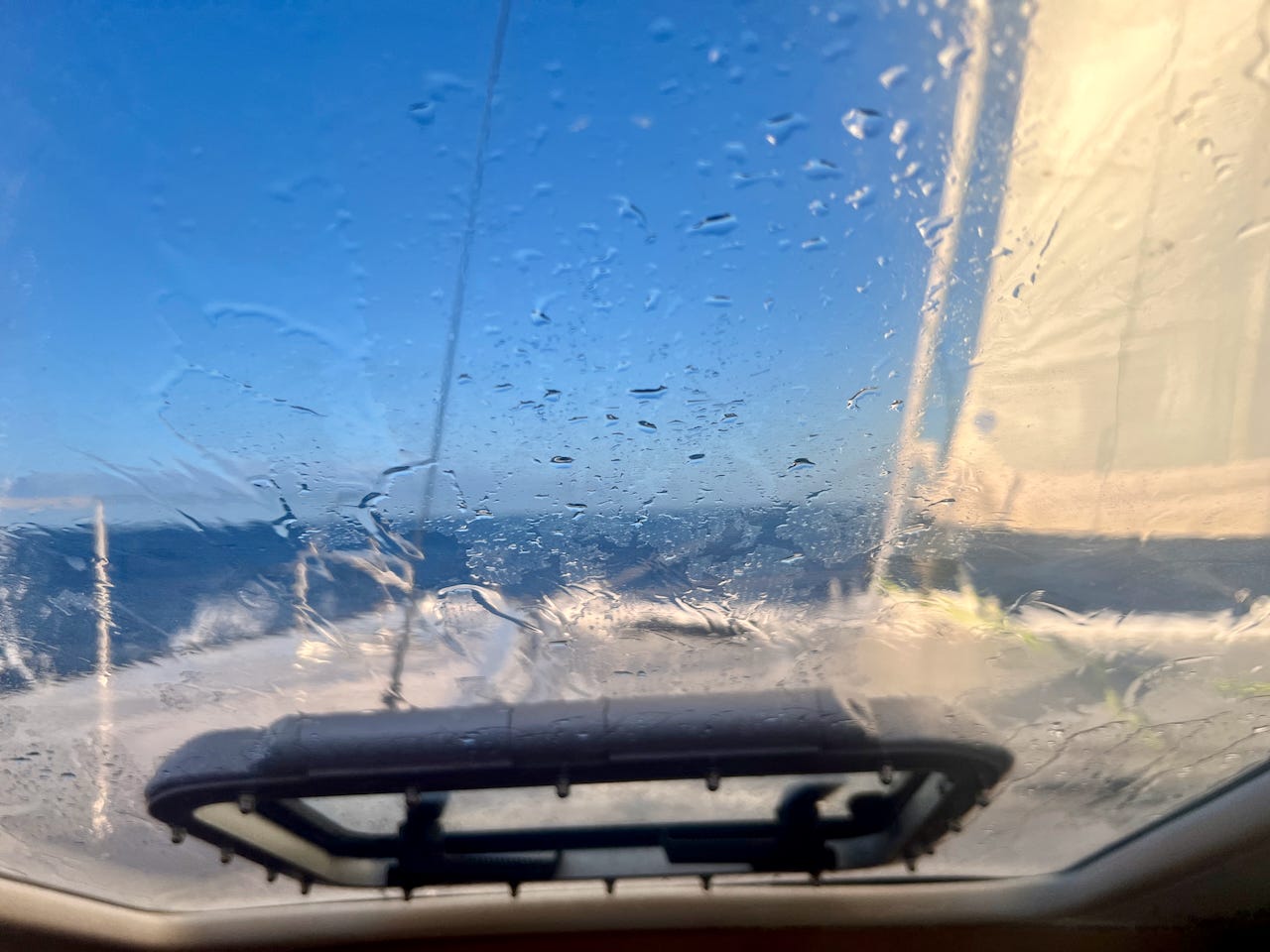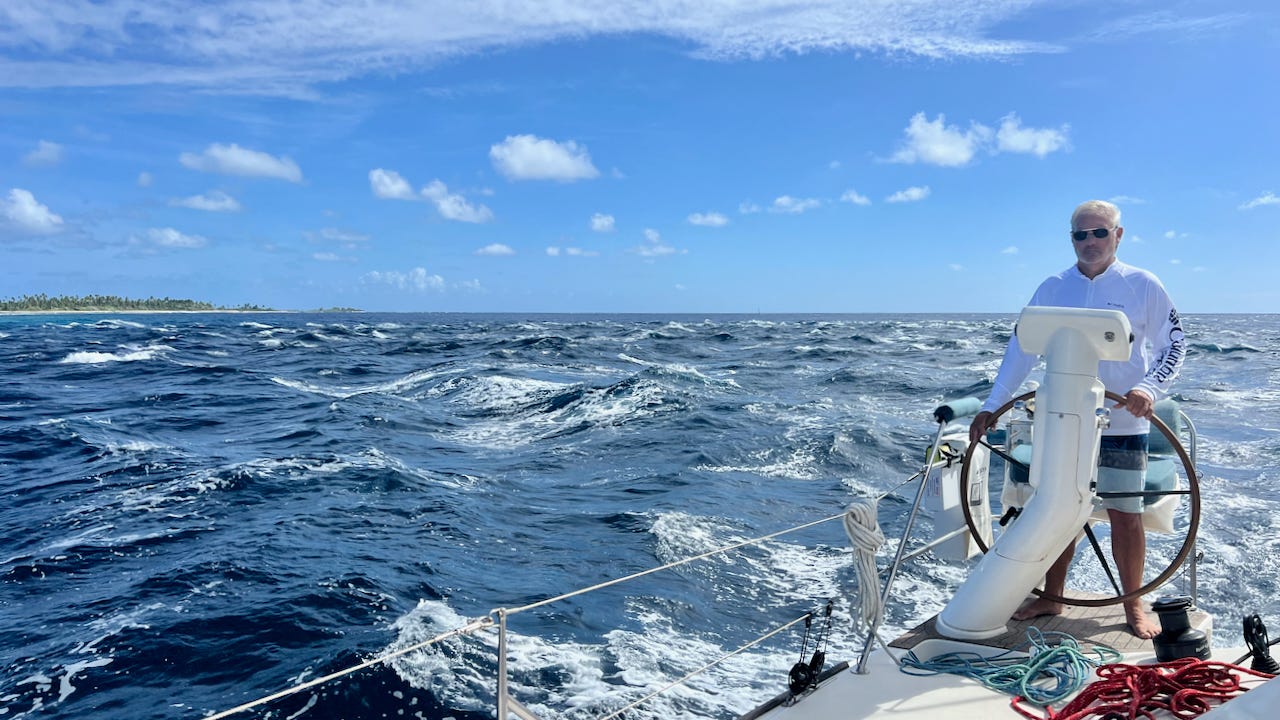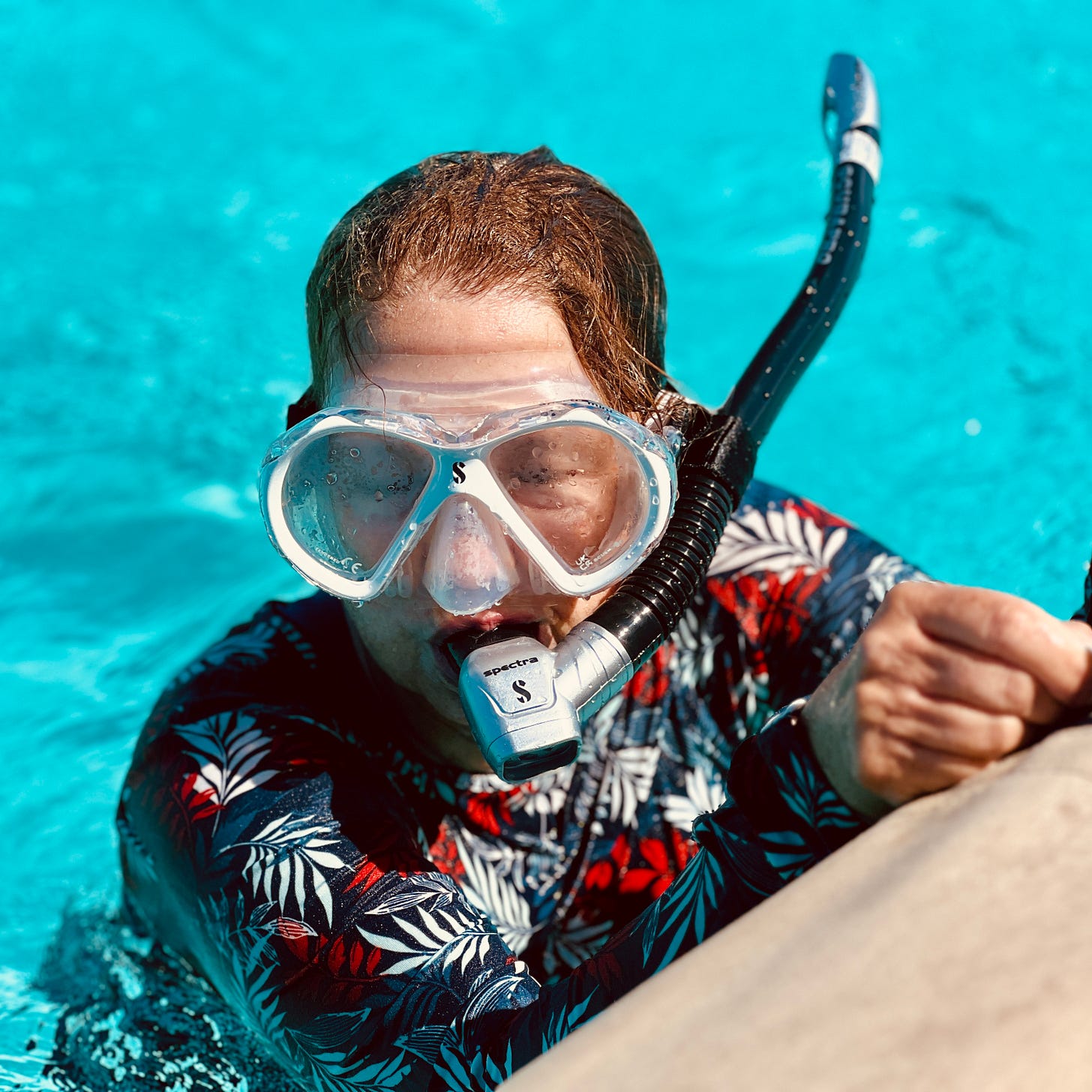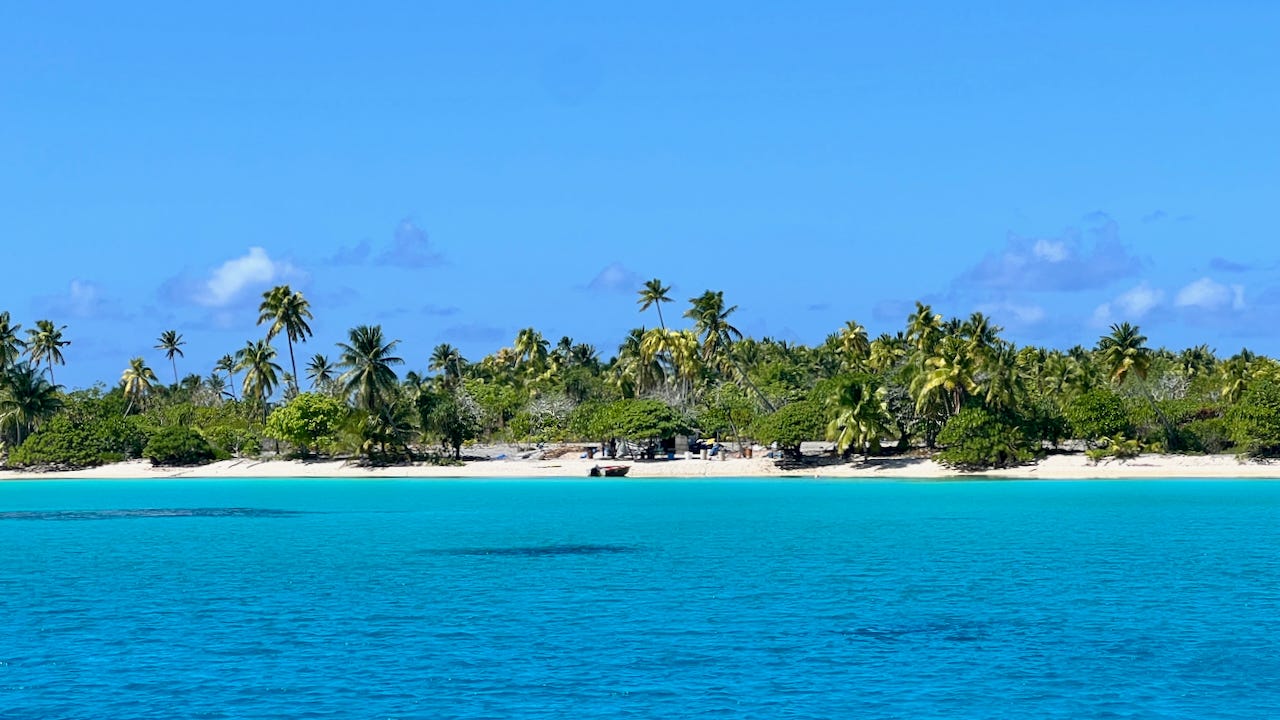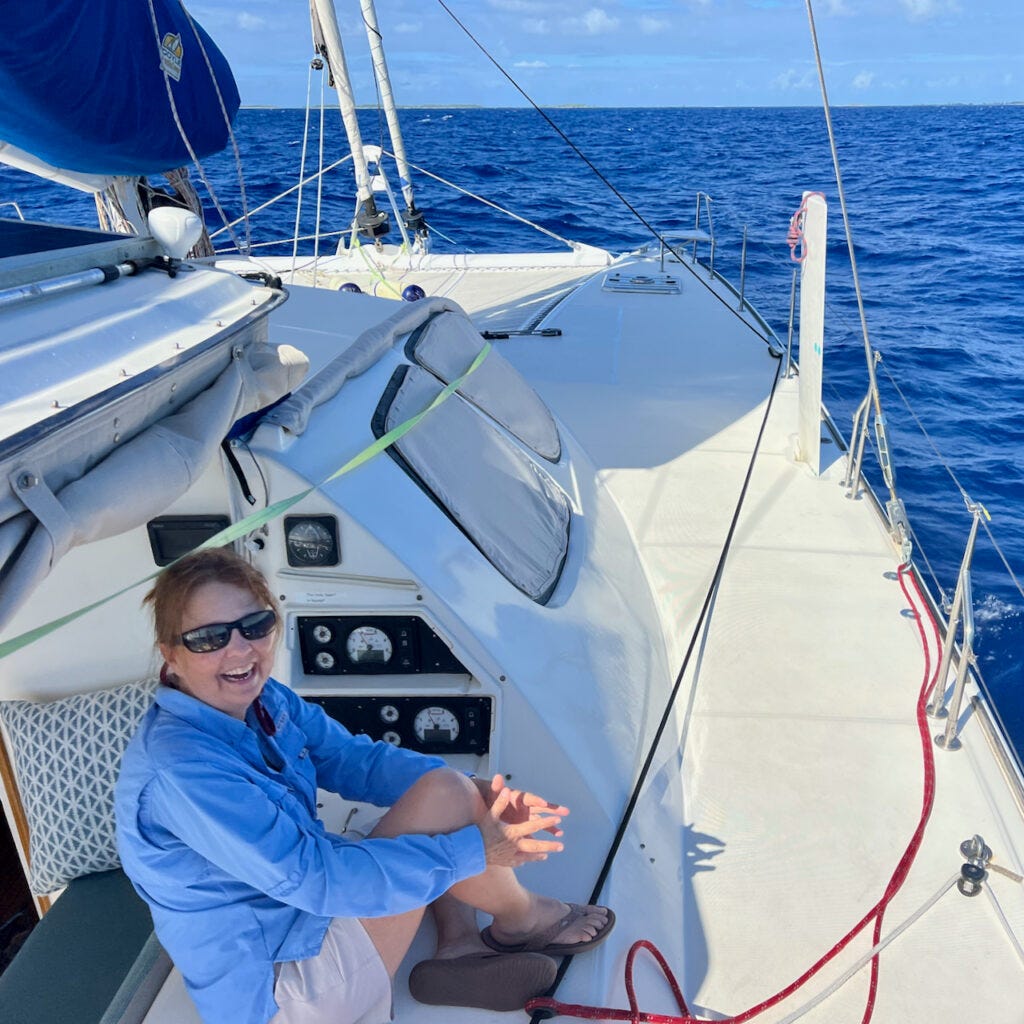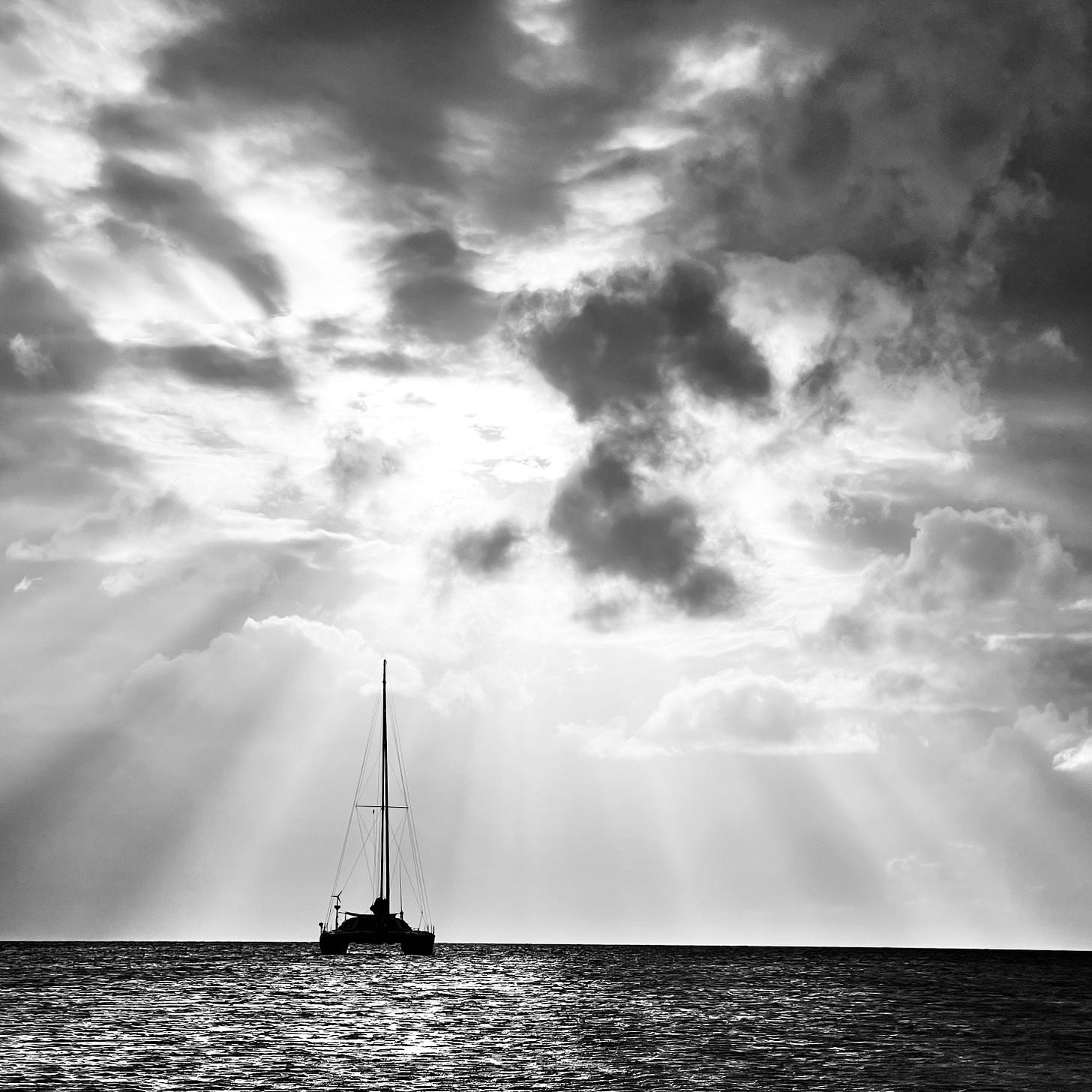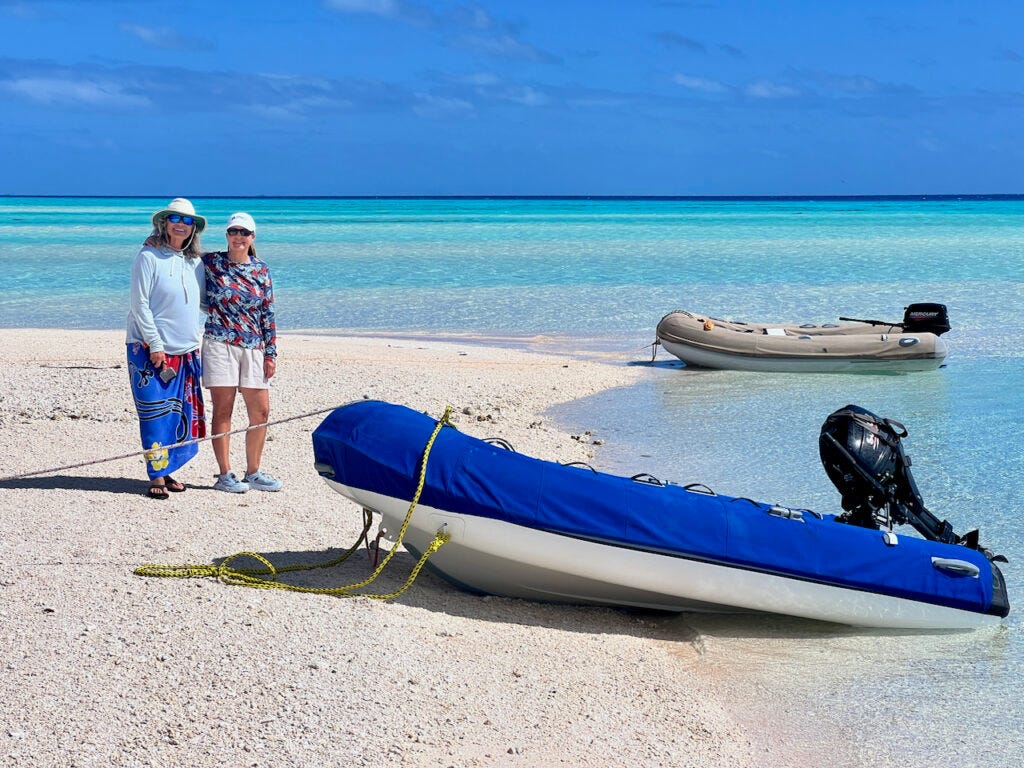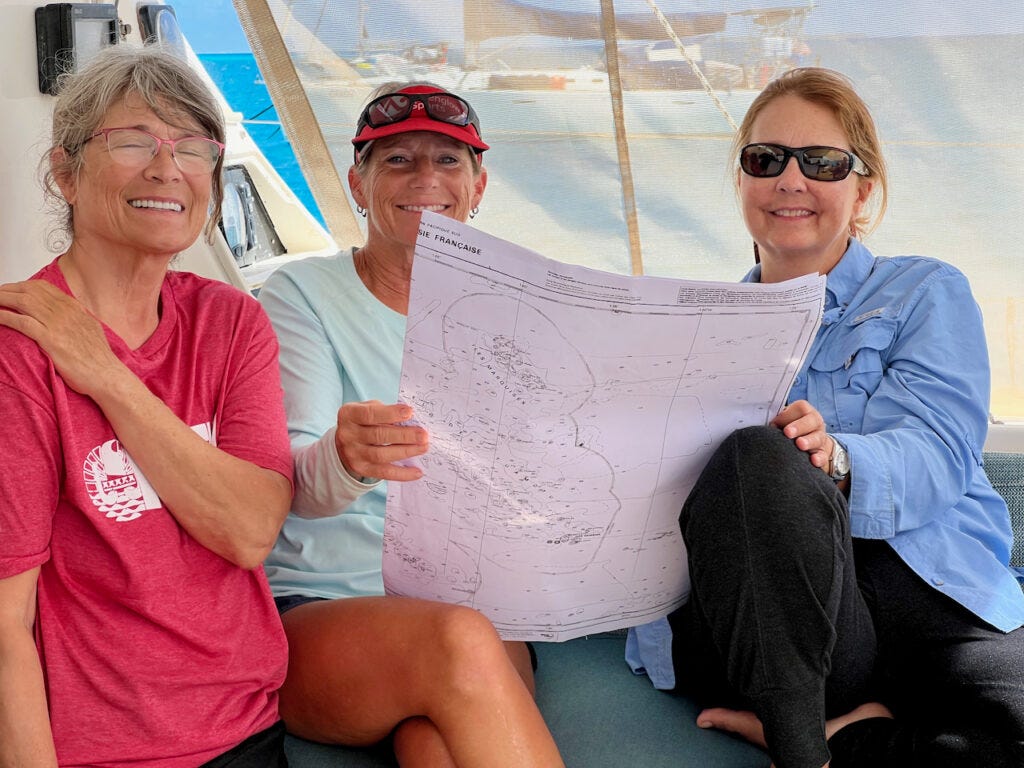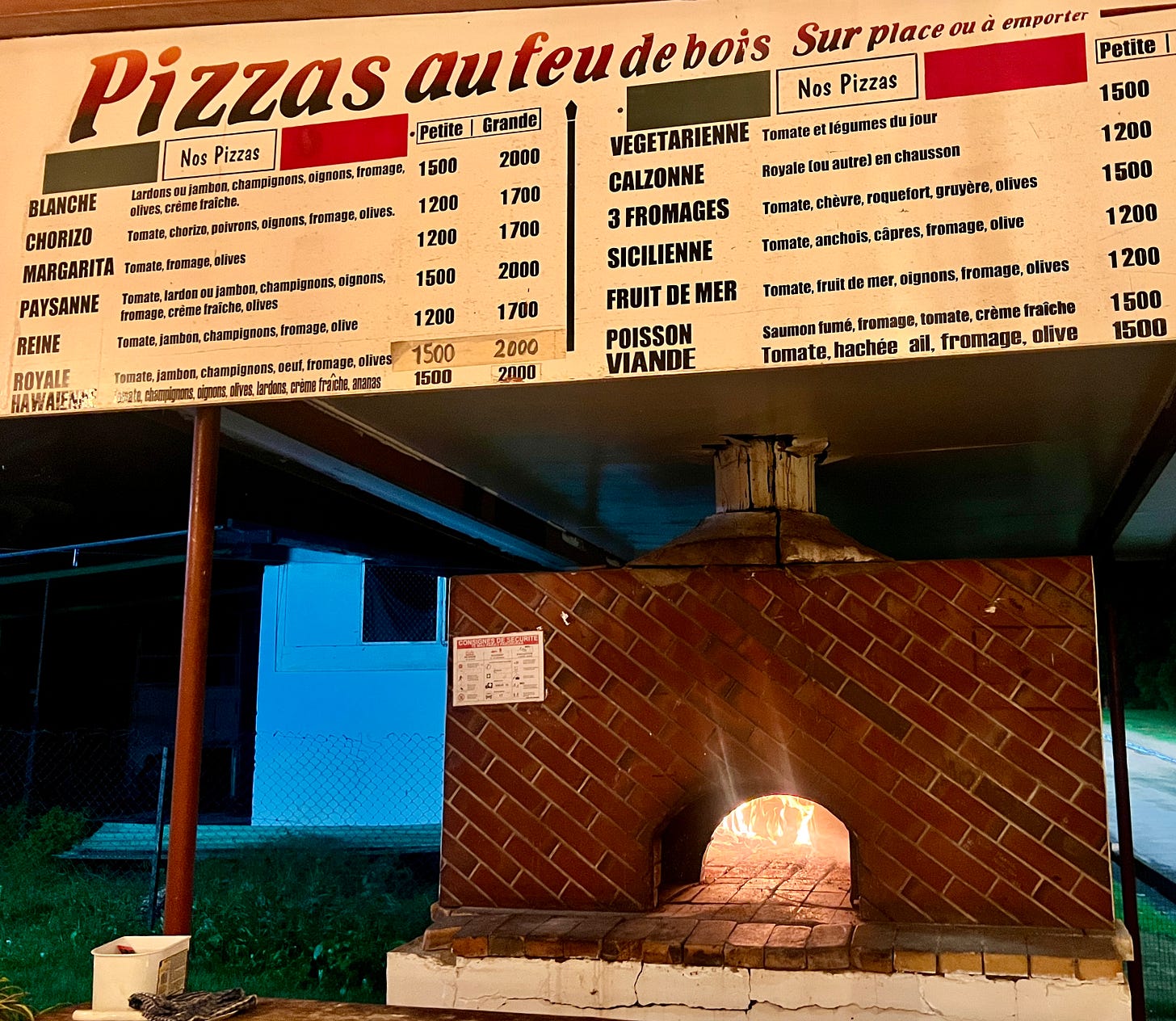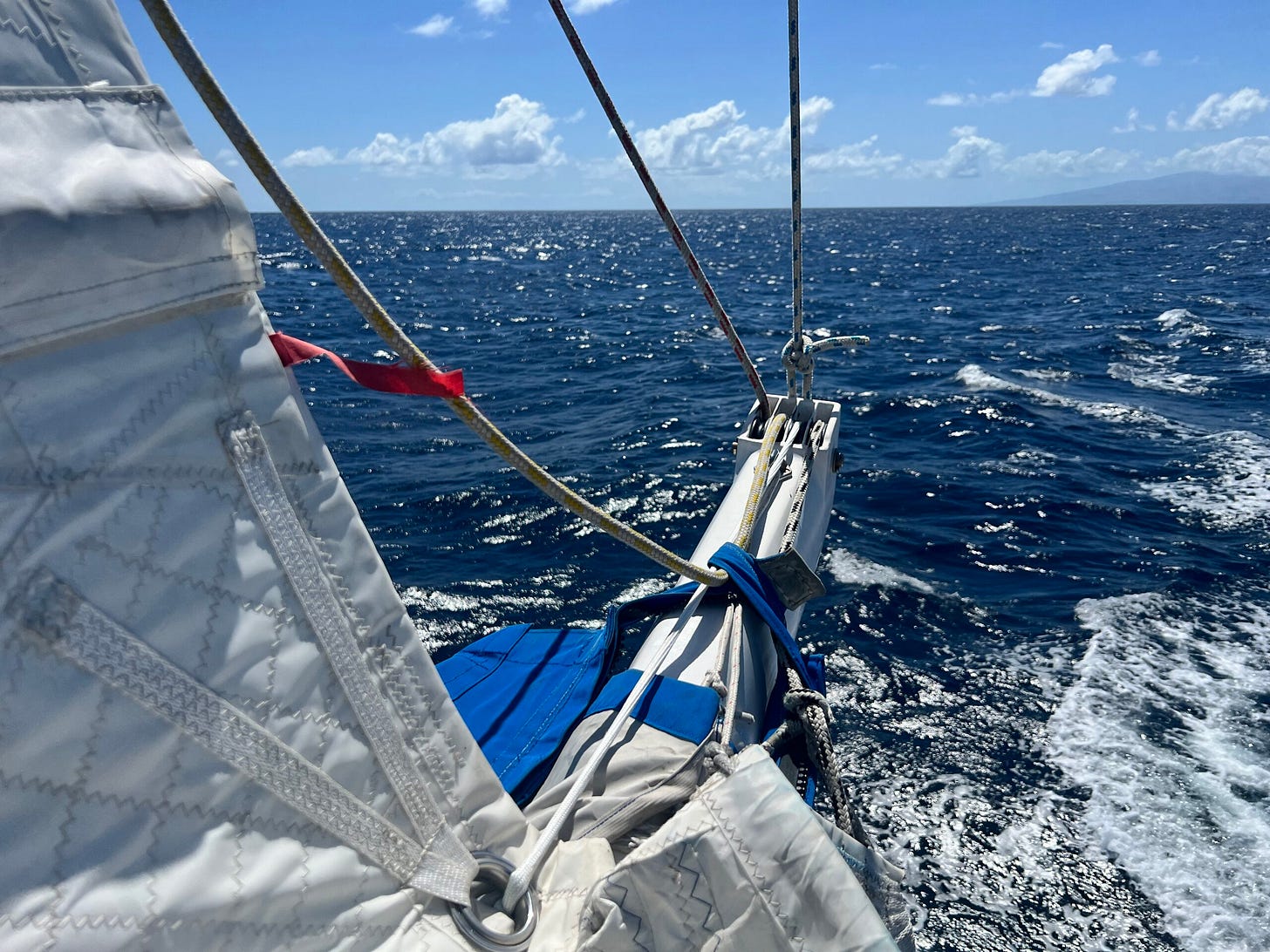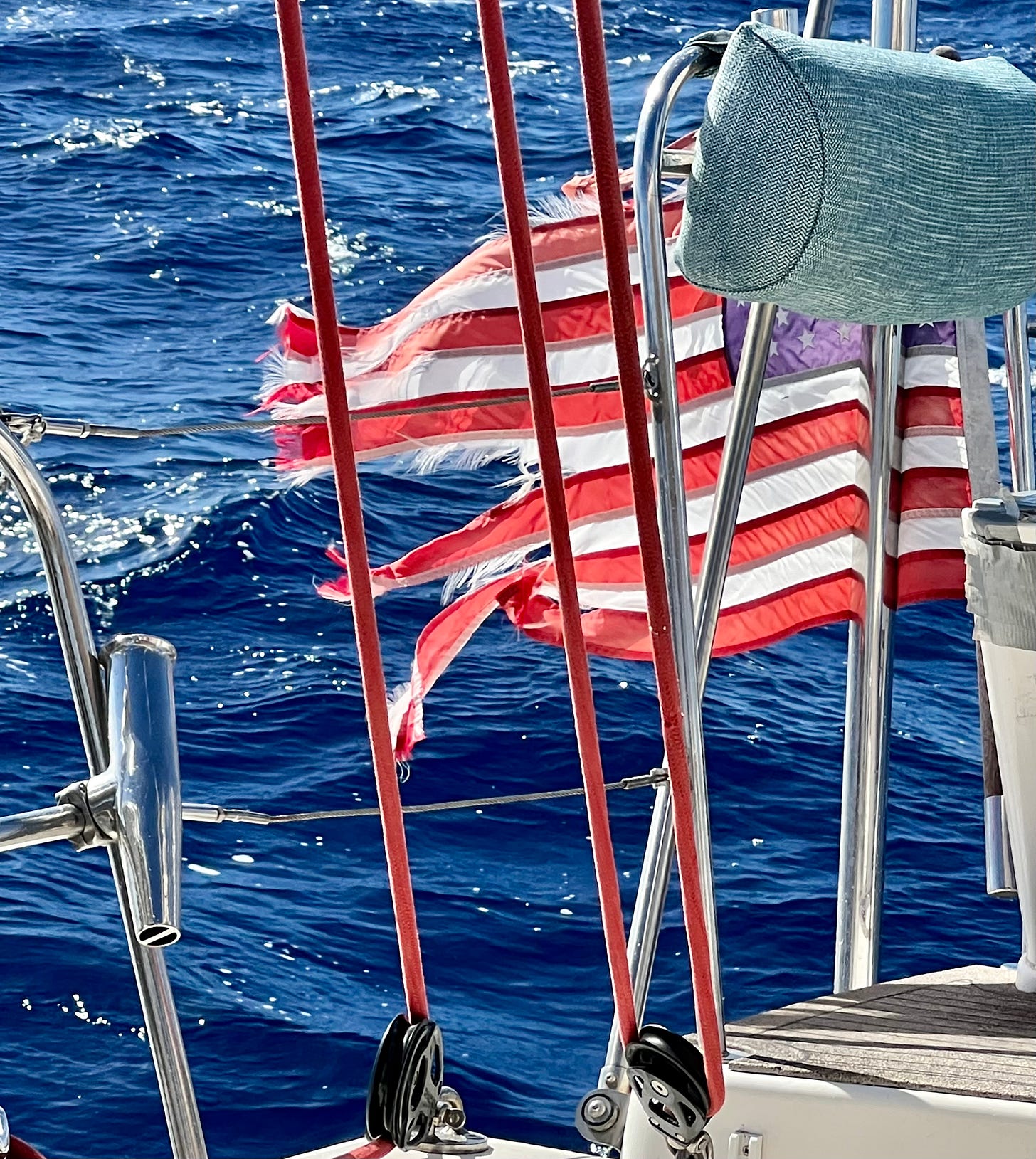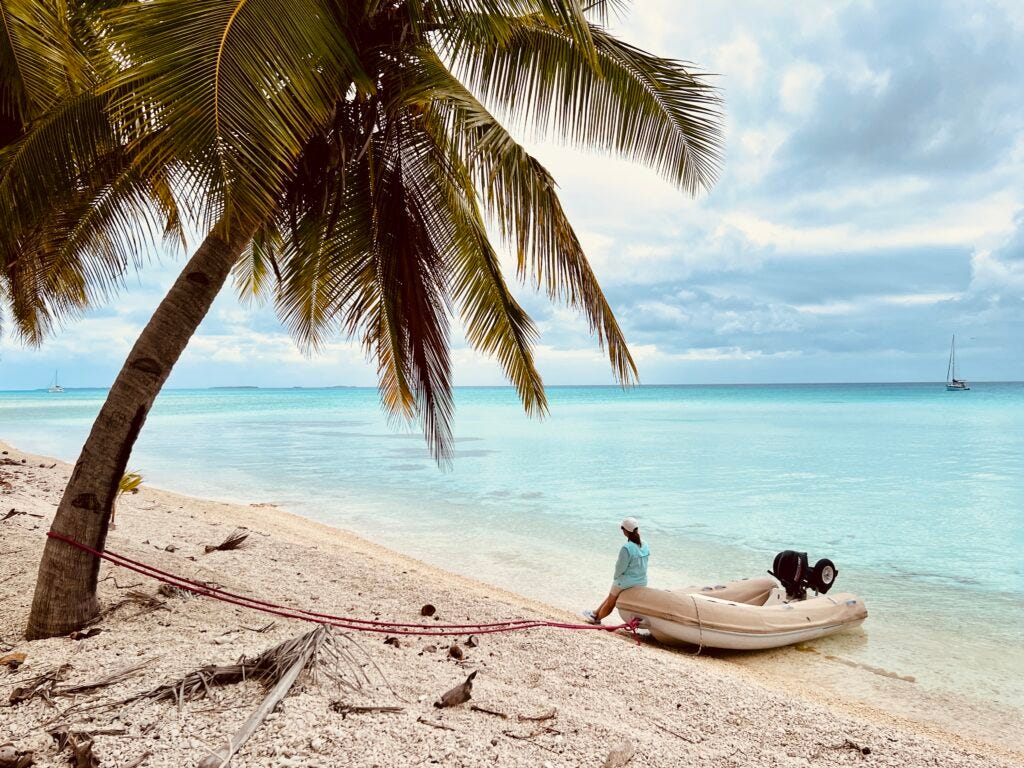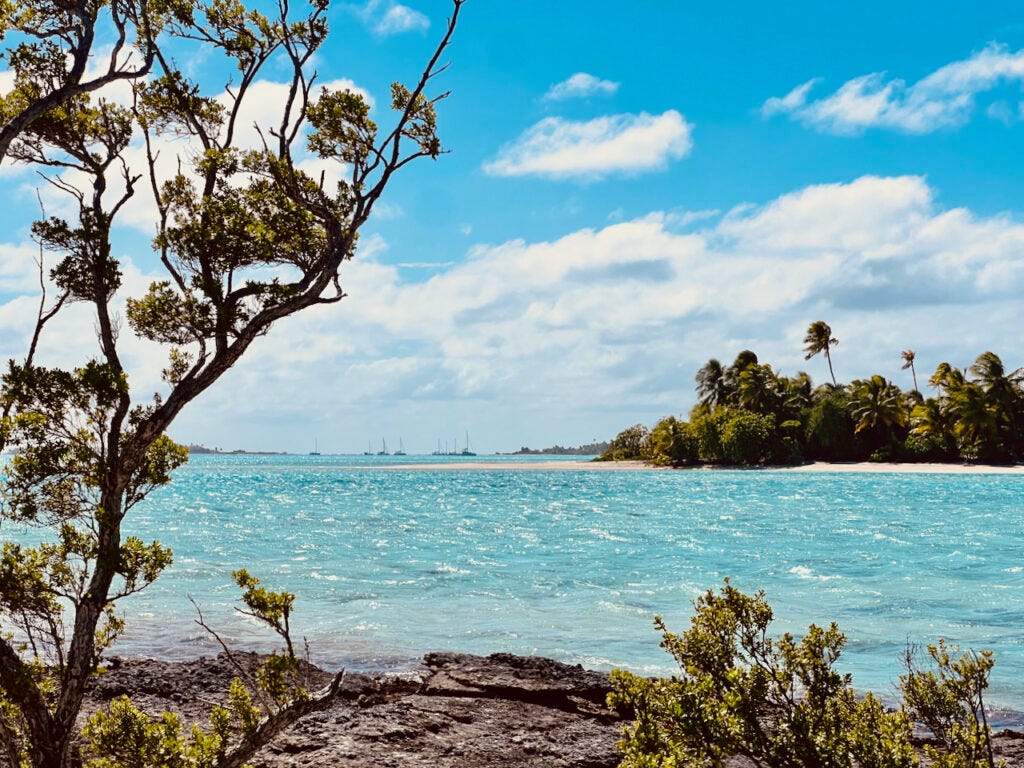Tahanea
Exploring the Tuamotu Archipelago
Tahanea
It was just the two of us on our first multi-day passage aboard Roam together. Strong, reinforced trade winds carried us on a 546 nautical mile beam reach in just 71 hours from Nuku Hiva in the Marquesas to Tahanea atoll in the Tuamotu archipelago. Thus ends our time in the Marquesas and thus begins our time in the Tuamotus.
United Airlines and Air Tahiti brought us back to Nuku Hiva from San Francisco via Papeete on May 10th. We spent the next day tackling projects and errands. I replaced our watermaker pressure vessels with new ones we brought with us and ferried jugs of diesel fuel from the island’s only gas station. Kevin and Gael from Yacht Services Nuku Hiva kept an eye on Roam while we were away, but the waterline was full of marine growth, so I spent a few hours scrubbing it off. Meanwhile, Pam walked all over Taioha’e, shopped for groceries to re-provision us, and picked up our laundry.
The weather looked promising, so we decided to depart Nuku Hiva and sail to the Tuamotus to meet up with some friends. We also needed to start thinking about where we could leave the boat for a week in early June so I could fly to Australia for a work gig. Fakarava and Rangiroa in the Tuamotus could work, as could Tahiti or Moorea in the Society Islands. Either way, we had to decide whether to spend another month in the Marquesas or start making our way west. We decided it was time to head west.
We had a great sail, a fast beam reach across the South Pacific Ocean. Pam, as usual, was a rock in these conditions. Me, not so much. The combination of jet lag, travel fatigue, and the mild nausea I get during the first day or two at sea made it uncomfortable. I tackled a few projects early in the passage while the wind was still light leaving Nuku Hiva. I replaced the mainsail reef outhaul lines with new ones that John Hansen in Alameda made for us while we were back in the US. But after that, I was just existing and keeping the boat on course for most of this trip. Sailing fast in large, beam seas makes for a loud and uncomfortable motion. With only two of us to stand watches, sleep is precious and scarce.
We let our arrival time determine our landfall. We ended up passing Raroia and Makemo, both popular atolls to visit. We went by them in the middle of the night and rather than bob around waiting for daylight and a favorable tide, we pushed on to Tahanea.
Visualize a deserted tropical island—that’s the Tuamotus. Geologically, the Tuamotus are the opposite of the Marquesas. While the Marquesas are comparatively young, volcanic mountain jungles, the Tuamotus are older coral atolls. Atolls like the Tuamotus start out as volcanic mountains. A coral reef forms around the mountain, then over time, the mountain sinks into the sea, leaving the coral reef intact. What remains is a ring of coral with a calm lagoon inside. Often, there are a few “passes” in the coral reef that allow a boat to enter the lagoon. The Tuamotus are made up of 77 of these atolls, of which about 45 are inhabited. They constitute one of the five main archipelagos of French Polynesia.
Navigating these passes through the reef and into the lagoon requires planning around the timing and state of the tide. A huge volume of water flows in and out of the lagoon, creating strong currents and rough, standing waves in the passes. Tide prediction here is part science, part guesswork. If the wind has been blowing from a certain direction for a long time, it can cause waves to flow over the reef and fill up the lagoon. This extra seawater in the lagoon has to go somewhere and it often alters the tidal behavior in the passes such that the current only ebbs and never floods. You can research the high and low tide times, but you can’t be certain of the conditions until you get there and see for yourself. The pass in and out of Tahanea turned out to be manageable and not too terrifying. Good for our first time.

Once inside the lagoon, we navigated around numerous coral towers called “bommies” that come up from the deep all the way to the surface. We mostly used our eyes to see the bommies, but we supplemented visual naviagation with satellite images and electronic charts. Good, overhead sunlight is critical.
The inside of the atoll is often sand, formed by dead coral that grinds away over time and turns into sand. These low sandy, coral islands are called “motus” and are often covered by low scrub and palm trees. Finding a nice wide spot of sand amongst the rock and coral is the first step in getting anchored. Once the anchor is in the sand, we start paying out our anchor chain. We attach floats to the chain every 30 to 40 feet. Those floats suspend the chain up off the seafloor and keep it from damaging the coral and getting wrapped around it. This was our first time floating our chain. I’d read a lot about how to do it and talked to experienced South Pacific cruisers. As it turns out, it’s quite straightforward and easy to do. Unfortunately, not all sailors here do it and the coral suffers as a result.
The water quality and visibility are markedly better in the Tuamotus than in the Marquesas. Because of the thick jungles and rich volcanic soil in the Marquesas, the frequent rain showers wash a lot of organic matter into the bays. It’s clean, but the turbidity makes for poor visibility and rapid marine growth on the hull and anchor chain. Not so in the Tuamotus. Fresh, clear seawater flows in and out of the lagoons twice a day.
The highlight of these Tuamotu atolls is snorkeling the coral reefs that lie along the sides of the passes. We wait until slack tide and then motor the dinghy out of the pass and drop in as the flood tide starts. We float with the dinghy and let the current carry us across the reef back into the lagoon. We often do this in the company of a few other boats for safety. The clear, fresh seawater offers virtually unlimited visibility and carries in a lunch buffet for the fish and sharks that inhabit the pass. Without a doubt, it is the most amazing snorkeling we’ve ever done. I thought to bring an underwater housing for one of our cameras, except I brought the wrong camera batteries. We’ll have to wait until my trip to Sydney to pick up a proper underwater camera.
Tahanea is uninhabited. It’s designated a “Réserve naturelle des atolls de la Société et des Tuamotu”— a nature reserve. Part-time copra farmers live and work in simple camps on a few of the small islands (motus) that make up the coral ring. They are there to harvest, dry, and process coconuts into copra. You’ll find copra in many things you buy, including edible oils, cosmetics, industrial lubricants, animal feed, and health supplements. Processing it is hard, hot, dirty work.
Nico is a copra farmer who spends a few months a year in his camp on the southeast side of the Tahanea lagoon. He is a friendly guy who speaks only French. He’s happy to trade the fish, lobster, and coconut crabs he catches for things he needs. We took him up on his trading offer and had some amazing dinners of fresh coconut crab and lobster.
There is an ethical dilemma in the trading economy here. Ideally, you’d like to trade things the locals can use, like fishing gear, school supplies, clothing, sporting goods, tools, building materials, etc. But often what they want is alcohol. Many cruisers feel like this is a bad idea. Adding alcohol to life in a remote village isn’t ideal. It can fuel crime and domestic abuse. Nico lives alone when he's here and he wanted to trade for beer or whiskey. We still have a big stash of Mexican beer, and that was the medium of exchange for our lobster and crab. That and a bit of our rum supply. I’m not sure what the right answer is. Market forces at work, I guess.
We’ve had a delightful week in two of Tahanea’s anchorages: The southeast and the Teuakiri (eastern, middle pass) anchorages. The pass diving has been absolutely epic. It’s great to spend time with friends as well. We’re back in our cruising groove again. Next stop, Fakarava, only a day’s sail away.
A few photos
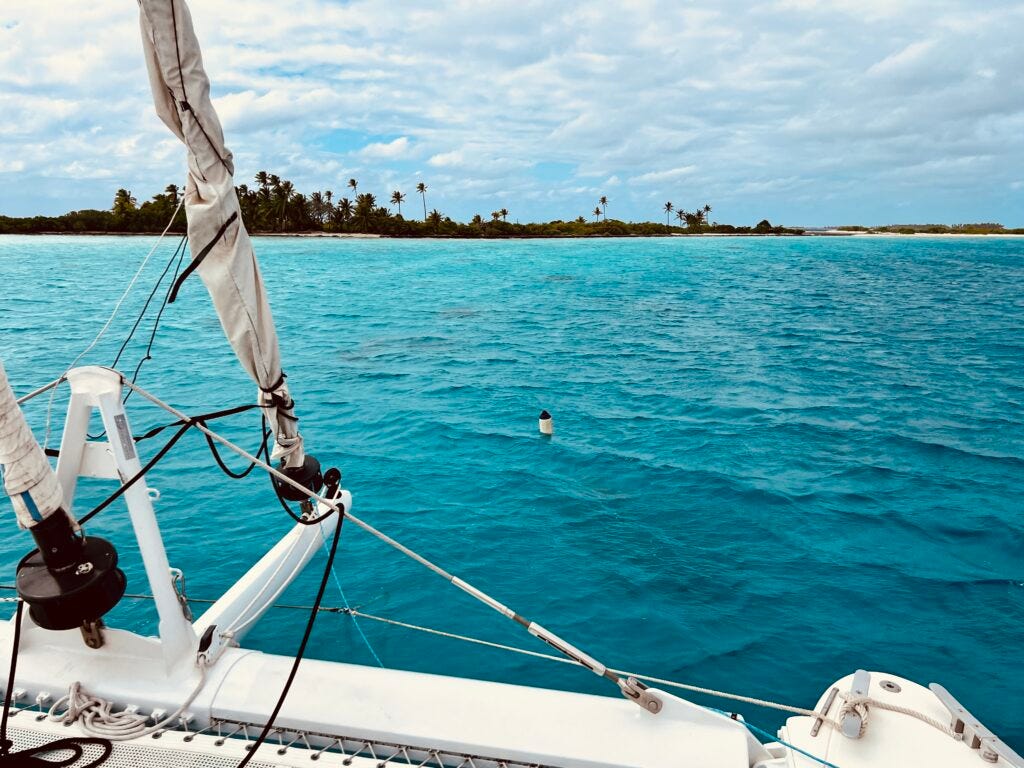

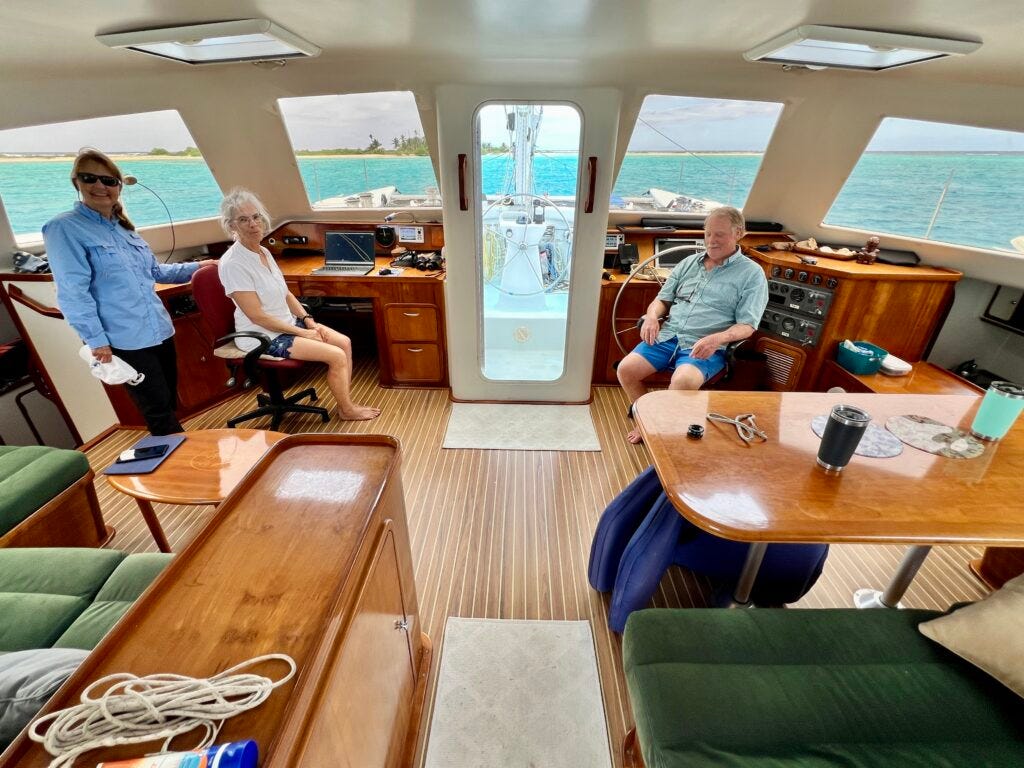

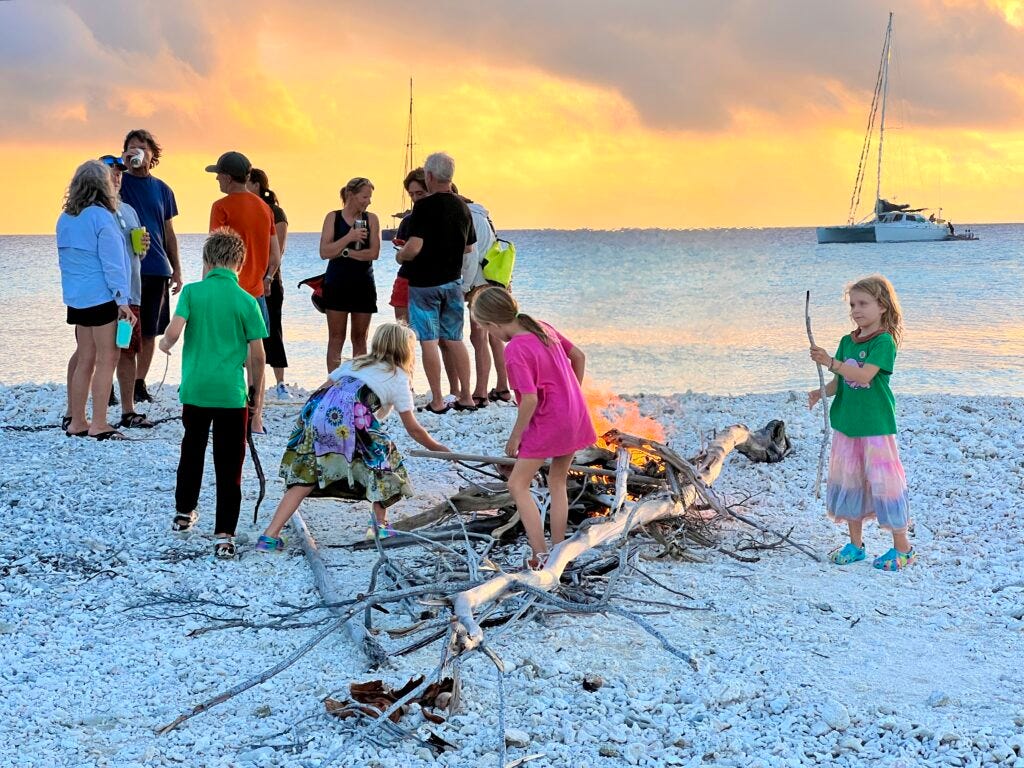
Excerpts From Our Log:
Back Aboard
Fri May 10 2024 20:22:00 GMT-1000 (Tahiti Time)
8 54.947S 140 06.243W
All is well. We are presently anchored in Taioha’e Bay after two days of airline travel from the US.
Other than a bottom that needs a good scrub, Roam is no worse for the wear.
The solar panels kept up with the refrigeration demands while we were gone. The batteries were at 93% when I stepped onboard this afternoon. We shut off the Starlink which saves a lot of electricity. It’s the largest single power consumer onboard. That meant we couldn’t access the security cameras remotely but this is known to be a safe and secure anchorage. That’s true of almost all of French Polynesia (with the possible exception of some parts of Papeete).
We had good success bringing a bunch of boat parts and food with us as checked luggage. No problems getting it all through customs in Papeete. We had to pay about $25 USD in excess baggage charges when we checked all of it on to Air Tahiti this morning for the final 5am flight to Nuku Hiva.
We have a few projects to knock out and some fresh food to buy and then we will head south. Most likely to Ua Pou and then onto the Tuamotus when the winds become favorable.
—Jim
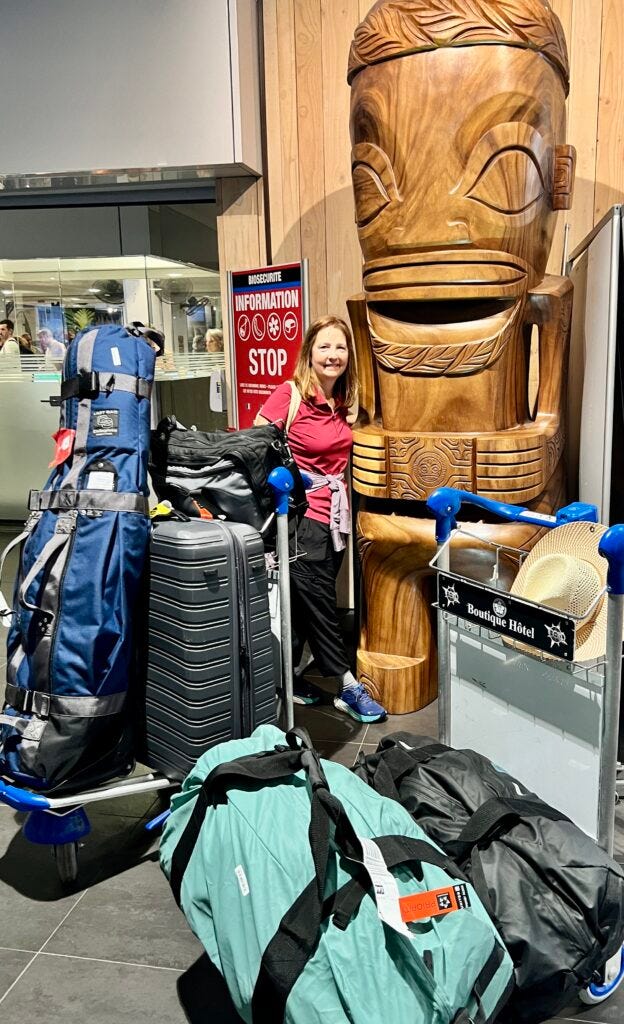
Bound for the Tuamotus
Sun May 12 2024 13:36:00 GMT-1000 (Tahiti Time)
9 21.755S 140 20.429W
All is well. We are presently beam reaching with a reefed main, and Jack reacher in 13 - 15 knots of breeze and slight 1 meter beam seas. 1/3 daggers. We are cooking along at 8.5 to 9 knots in beautiful conditions.
We left this morning on the 500 nautical mile reach to Makemo atoll in the Tuamotus. It should take us a little over two days to get there. We may have to slow down in order to time our arrival for the tide and sun angle.
We spent yesterday knocking out some preparation and projects. Pam tackled the grocery shopping while I installed our new watermaker pressure vessels and membranes and then went over to the islands only gas station to fill our diesel jugs to top off our tanks.
We also stopped to say hello to “Brizo” a fellow Catana (431) whose hailing port is Danville, CA! They just arrived from Mexico.
We used the opportunity today to change out our clew reef lines with the new ones we had made up while we were back in the US. Nice to have that project done. We will likely leave the first reef in this entire passage.
We chatted with our moms this morning. And the kids FaceTimed Pam while they were making their flight reservations to come and visit us. Which is pretty much the best gift Pam could get.
Happy Mother’s Day.
—Jim
Heavy going
Mon May 13 2024 07:56:00 GMT-1000 (Tahiti Time)
11 20.732S 141 10.837W
All is well. We are presently close reaching in 20 knot winds and pushing into six foot seas with a single reefed Solent and a double reefed main. 1/3 daggers. A true wind angle of about 70. Fast, but a rough ride.
Our destination is defined by our arrival time which is somewhat defined by our boat speed. Raroia and Makemo look unlikely. We arrive at night or the wee hours. That makes Tahanea the most likely landfall. It is surprisingly hard to slow this boat down.
Not exactly the idyllic trade wind sailing you read about. But we are looking forward to the Tuamotus.
—Jim
Final day
Tue May 14 2024 08:34:00 GMT-1000 (Tahiti Time)
14 04.369S 142 40.919W
All is well. We are presently beam reaching in 25-30 knots of wind with a double reefed main and a reefed Solent bashing into 6’-8’ beam seas. 1/3 daggers.
The wind built to 30 knots on Pam’s watch last night. But the boat is built for this and we have the right sail configuration set.
This is our first multi day offshore passage together with just the two of us in many, many years.
Lack of sleep and the rough sea conditions take their toll.
The wind and seas are forecast to abate late today (we’ve heard this song before).
For now we’ve taken to standing our watches inside the saloon and out of the wind and spray and occasional rain shower.
God bless our mighty B&G NAC3 autopilot driving the L&S RV2 hydraulic pump. This thing doesn’t break a sweat in these conditions.
But we are excited to be in the tuamotus. Landfall tomorrow morning in Tahanea.
—Jim
All is well. We are presently anchored in the southeast corner of Tahanea lagoon in the northern Tuamotu archipelago, French Polynesia. 71 hours, 546 nautical miles from Nuku Hiva. An average speed of just under 8 knots.
This was our first multi day passage with only the two of us aboard. The conditions were challenging with 20 - 25 knot winds and 6-8’ beam seas the entire trip.
Splitting the watches between two of us takes its toll on sleep. Going fast in rough seas always makes me a bit queasy for the first few days and this was no exception. Pam on the other hand is a rock on these trips.
Other than a few drips and leaks (and the fact we forgot to shut two of the hatches when we departed Nuku Hiva) the boat did great. She was getting a steady firehouse of seawater over the deck most of the trip.
It is difficult to describe how beautiful this island is. It is uninhabited except for the part time copra farmers on the beach in front of us.
We also caught up with a few friends who arrived yesterday. It was nice to have a welcoming committee helping us get situated.
Entering the lagoon requires some thought as to the timing of the tides. An enormous volume of water goes in and out of these huge lagoons through just one or two narrow passes. We arrived an hour before predicated high tide and faced a 3-4 knot ebb current in the pass this morning.
Once inside the lagoon you must navigate around numerous coral pillars (called “bommies”). You do this visually with a bow lookout and with a combination of electronic charts and satellite images, the latter of which are truly indispensable in avoiding tearing your boat open by hitting one. Our friend Joanne sent me their “track” from the other day which when overlayed on a satellite image made it easy to work our way across the lagoon. A distance of about 8 miles.
For now the anchor is set, the chain is floated, and the boat is secure. Time for a hot shower and a long nap.
—Jim
Tahanea Middle Pass
Wed May 22 2024 11:34:00 GMT-1000 (Tahiti Time)
16 50.882S 144 41.657W
All is well. We are presently anchored in the main anchorage of Tahanea in a 20-25 knot easterly breeze. The prevailing wind finally backed from the southeast to the east making it possible to use this anchorage. Honestly, it was better where we just left.
We are in the company of Javelin, Fundango, and Chaos. We moved here to be close to the two main passes, both of which offer epic diving.
It’s still bit breezy which is forecast to abate over the next day or two (but we know how that goes).
Move upMove downToggle panel: Yoast SEO
Move upMove downToggle panel: Theme Page Options
Open save panel
Post
Notifications
There is an autosave of this post that is more recent than the version below.


